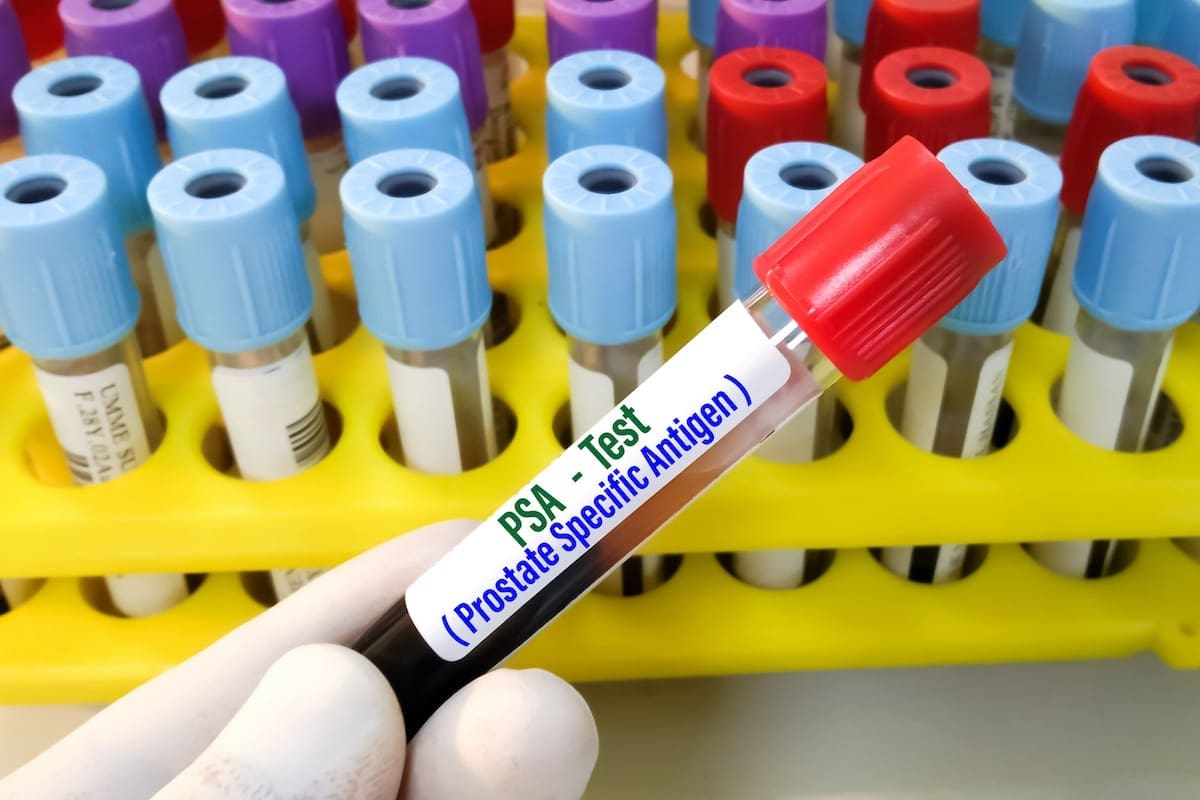Last Updated on November 27, 2025 by Bilal Hasdemir

When you get a brain tumor diagnosis, you want the best treatment. At Liv Hospital, we offer the newest drugs for brain tumor, including advanced glioblastoma chemotherapy options. We also provide personalized care to help you achieve the best possible recovery.
Brain cancer treatment drugs are key in fighting the disease. Temozolomide, an oral chemotherapy, is often used for glioblastoma.
We take a team approach to care. This means we use surgery, radiation, and chemotherapy together. It’s the best way to help you.
Key Takeaways
- Temozolomide is a primary oral chemotherapy agent for glioblastoma.
- Personalized care strategies are key to the best results.
- A team effort is used to treat brain tumors.
- Having the latest glioblastoma chemotherapy drugs is important.
- Good treatments mix surgery, radiation, and chemotherapy.
Understanding Brain Tumors and Treatment Approaches

It’s important to know about brain tumors to find the best treatments. These tumors can be harmless or cancerous. Their treatment depends on the tumor’s type, size, and where it is in the brain. We’ll look at the different types of brain tumors and how medicine helps manage them.
Types of Brain Tumors and Their Characteristics
Brain tumors are sorted by where they start, how fast they grow, and how serious they are. Primary brain tumors start in the brain. Secondary brain tumors spread from other parts of the body. Knowing the tumor’s grade and genetic makeup helps doctors choose the right treatment.
Gliomas, meningiomas, and acoustic neuromas are common brain tumors. Gliomas come from glial cells and can be low-grade or high-grade (glioblastoma). Meningiomas are usually not cancerous and come from the meninges. Knowing the exact type and details of a brain tumor is key to picking the right treatment.
The Role of Medication in Brain Tumor Management
Medicine is vital in managing brain tumors, helping to control symptoms and slow growth. Brain tumor medication includes chemotherapy, targeted therapy, and corticosteroids. Chemotherapy uses drugs to kill cancer cells. Targeted therapy attacks specific molecules that help tumors grow.
Corticosteroids help reduce swelling and ease symptoms like headaches and seizures. The right medicine depends on the tumor’s type, grade, and the patient’s health. We’ll talk more about these medicines and how well they work in the next sections.
The Evolution of Drugs for Brain Tumor Treatment

Brain tumor treatment has changed a lot over time. This change comes from new research and better drugs. Now, we focus on treatments that target tumors more precisely and work better.
Historical Perspective on Brain Tumor Medications
Early treatments for brain tumors were not very specific. They had many side effects. But, hey helped start the journey to today’s treatments.
Carmustine (BiCNU) was one of the first chemotherapy drugs for brain tumors. It was introduced in the 1960s. It was a big step forward, giving patients with certain brain tumors a new hope.
“The development of carmustine represented a critical step in treating brain tumors. It showed that chemotherapy could really help patients.”
Oncology Research
Major Breakthroughs in Brain Cancer Pharmacology
Recently, we’ve seen big steps forward in treating brain cancer. Temozolomide is a key drug for glioblastoma, a very aggressive brain cancer.
Bevacizumab (Avastin) is another big leap. It stops tumors from getting blood, which slows their growth.
| Drug | Mechanism of Action | Primary Use |
| Temozolomide | Alkylating agent | Glioblastoma |
| Bevacizumab (Avastin) | Anti-angiogenic | Recurrent glioblastoma |
| Carmustine (BiCNU) | Nitrosourea | Various brain tumors |
These new drugs show how far we’ve come in treating brain tumors. With ongoing research, we’ll see even more new treatments.
Temozolomide: The Primary Oral Chemotherapy Agent
In the field of neuro-oncology, temozolomide is a key oral chemotherapy drug. It’s used as a first-line treatment for glioblastoma and other high-grade brain tumors. This is because it can slow down tumor growth by interfering with DNA replication.
Mechanism of Action and Effectiveness
Temozolomide works by damaging the DNA of cancer cells. This makes it hard for these cells to multiply. It’s very important in controlling glioblastoma cells.
Research shows that using temozolomide with radiation therapy can greatly improve survival rates for glioblastoma patients
Its ability to cross the blood-brain barrier makes it a great choice for brain tumors. Being an oral drug, it’s also easy to take, which helps patients keep up with their daily routines.
Application in Glioblastoma and High-Grade Tumors
Temozolomide is mainly used for glioblastoma, a very aggressive brain cancer. It’s also used for other high-grade tumors where it’s shown to be effective. The treatment involves taking temozolomide for five days, followed by a 23-day break, often with radiation therapy.
Adding temozolomide to treatment plans has led to better results for glioblastoma patients. It’s now a standard part of neuro-oncology, showing its key role in fighting this tough disease.
Side Effects and Management
While temozolomide is mostly safe, it can cause side effects like nausea, fatigue, and blood-related issues. It’s important to manage these side effects to keep patients’ quality of life good.
To help with these side effects, we use supportive care like antiemetic therapy for nausea and regular blood tests. Sometimes, we need to adjust the dosage or stop treatment temporarily.
Nitrosoureas: Carmustine and Lomustine
Carmustine and lomustine are key in fighting brain tumors. They’ve been used for years, helping when other treatments don’t work.
Mechanism of Action
Carmustine, or BiCNU, stops tumor cells from growing by messing with their DNA. This is key in fighting cancer cells.
It can get past the blood-brain barrier. This lets it reach and attack brain tumors effectively.
Role in Recurrent Disease
Lomustine is great for brain tumors that come back. It’s easy to take because it’s an oral drug. It helps slow down tumor growth.
Doctors often turn to lomustine when tumors come back. Studies show it can help patients do better.
Toxicity Profile and Monitoring
Both drugs can cause side effects like low blood counts, nausea, and tiredness. It’s important to watch these closely.
- Key Side Effects: Myelosuppression
- Nausea and vomiting
- Fatigue
- Liver toxicity
- Monitoris: Regular blood counts
- Liver function tests
- Assessment of overall patient health
Knowing how carmustine and lomustine work helps doctors treat brain tumors better. This improves patients’ lives and outcomes.
Targeted Therapy: Bevacizumab (Avastin) and Beyond
Targeted therapies like bevacizumab are changing how we treat brain cancer. They offer a more precise way to fight tumors than traditional chemotherapy. Bevacizumab, known as Avastin, is a key part of treating some brain cancers.
Addressing Tumor Blood Supply
Bevacizumab stops tumors from making their own blood supply. It blocks vascular endothelial growth factor (VEGF), cutting off the nutrients and oxygen tumors need. This helps slow down tumor growth and reduce symptoms.
This effect is important because it not only slows tumor growth but also reduces swelling around the tumor. This can improve patient outcomes.
Symptom Relief and Quality of Life Benefits
Bevacizumab helps improve symptoms and quality of life for brain tumor patients. It reduces tumor size and swelling, leading to better brain function and overall well-being. Patients often suffer from headaches, seizures, and cognitive problems, making life better.
Clinical evidence shows that bevacizumab is good for symptom relief. It’s very helpful for patients with glioblastoma that comes back. Being able to manage symptoms is key to improving daily life and allowing for more treatments.
Limitations in Overall Survival Impact
Bevacizumab has big benefits for symptoms and quality of life, but its effect on survival is not as clear. Clinical trials have shown mixed results on how much it can extend life. This shows how complex brain tumors are and the need for more research.
Even with these challenges, bevacizumab is a valuable treatment for many patients, like those with high-grade tumors. Research into new treatments and combinations is ongoing. It aims to improve outcomes for brain tumor patients.
Emerging Medications: Everolimus and Vorasidenib
The field of brain tumor treatment is changing with new drugs like everolimus and vorasidenib. These drugs aim at specific pathways in brain tumors, giving hope to those with tough diagnoses.
Mechanism and Applications
Everolimus blocks the mTOR pathway, which is often wrong in cancers, including brain tumors. Vorasidenib targets mutant IDH1 and IDH2 enzymes found in gliomas. This makes vorasidenib a strong option for gliomas with IDH mutations.
These drugs are used based on the tumor’s genetic profile. Everolimus is tested in SEGA tumors linked to TSC. Vorasidenib works best in IDH-mutant gliomas, showing the need for genetic tests to find the right patients.
Patient Selection Criteria
Choosing the right patients for these drugs is key. For everolimus, those with SEGA and TSC might benefit. Vorasidenib is for those with IDH1 or IDH2 mutations in their gliomas.
Genetic tests are vital for finding these mutations and guiding treatment. This approach makes sure patients get the best therapy for their tumor.
Early Results and Promise
Early trials show promise for everolimus and vorasidenib. Everolimus has shrunk SEGA tumors in TSC patients. Vorasidenib has improved survival in IDH-mutant glioma patients.
These drugs are a big step forward in treating brain tumors. As research grows, we’ll see better results and quality of life for patients. They offer targeted treatment with fewer side effects than traditional chemotherapy.
Comprehensive Overview of Drugs for Brain Tumor Management
We look at the wide range of drugs for managing brain tumors. We focus on approved medications and treatment strategies. Treating brain tumors is complex, with many drugs playing different roles.
FDA-Approved Medications
The FDA has approved several drugs for brain tumors. Temozolomide is a key oral chemotherapy for glioblastoma and other high-grade tumors. Other drugs include Bevacizumab (Avastin) and Carmustine (BiCNU), used in various treatments.
| Drug | Primary Use | Mechanism of Action |
| Temozolomide | Glioblastoma, high-grade tumors | An alkylating agent, damaging tumor DNA |
| Bevacizumab (Avastin) | Recurrent glioblastoma | Monoclonal antibody inhibits angiogenesis |
| Carmustine (BiCNU) | Various brain tumors, including glioblastoma | Nitrosourea, alkylating agent |
Off-Label Uses in Brain Cancer
Many drugs are used off-label for brain cancer. Everolimus and Vorasidenib are being studied for specific brain tumors. These uses are based on clinical evidence and the doctor’s judgment.
Off-label prescribing offers flexibility in treatment. It’s important to weigh the benefits and risks carefully.
Combination Therapy Approaches
Combination therapy is key in treating brain tumors. It uses multiple drugs to target different tumor aspects. This can improve treatment results and fight resistance.
For example, Temozolomide with radiation is standard for glioblastoma. Bevacizumab with chemotherapy is used for recurrent disease.
Understanding the drugs available helps doctors create personalized plans. As research grows, new treatments will offer hope to patients and their families.
Medication Delivery Methods for Brain Cancer Therapies
Medication delivery methods are key in treating brain cancer. They affect how well the treatment works and how the patient feels. The method used can change the treatment’s success and the patient’s experience.
Oral Administration
Oral administration is a common way to give brain cancer meds. Patients take pills or capsules. It’s easy and doesn’t hurt, but it can be hard to get the meds to work well if the patient is sick.
Temozolomide, a common brain cancer drug, is taken by mouth. This makes it easy for patients to take at home, helping them stick to their treatment.
Intravenous Infusions
Intravenous (IV) infusions are another important way to give brain cancer meds. The meds go straight into a vein, usually in a hospital. This method can give more meds, which helps with some brain cancers.
Bevacizumab (Avastin), used for glioblastoma, is given through IV. It goes straight into the blood, where it can reach the tumor.
Implantable Drug Delivery Systems
Implantable drug delivery systems are a new way to give meds for brain cancer. A device is surgically implanted to release meds directly to the brain or tumor. This method can make treatments more effective and reduce side effects.
The Gliadel wafer is an example of this. It’s put in the tumor during surgery and slowly releases a chemotherapy drug.
As research gets better, we’ll see more new ways to give meds for brain cancer. These advances will help make treatments better and improve patients’ lives.
Personalized Medicine in Brain Tumor Treatment
Personalized medicine is changing how we treat brain tumors. It offers new hope for patients. By tailoring treatment to each patient’s needs, we can improve results and lessen side effects.
Genetic Profiling and Drug Selection
Genetic profiling is key in personalized medicine for brain tumor patients. It helps us understand the tumor’s genetic makeup. This lets us pick targeted therapies that are more likely to work.
Targeted therapies target specific molecular issues in the tumor. By matching the right therapy to the right patient, we boost treatment success chances.
Biomarkers for Treatment Response
Biomarkers are vital in personalized medicine for brain tumors. They show how the tumor reacts to treatment. By watching biomarkers, we can see if a therapy is working and adjust if needed.
Early detection of treatment response is key in managing brain tumors. Biomarkers help us spot who’s doing well and who might need a different approach.
Tailoring Therapy to Individual Patients
Tailoring therapy means looking at many factors for each patient. This includes their genetic profile, medical history, and health. By planning treatment this way, we create strategies that fit each patient’s needs.
Personalized treatment plans change as the patient responds to therapy. This flexible approach lets us adjust and improve the treatment as needed.
Effectiveness and Limitations of Current Brain Tumor Medicine
Recent advances in brain tumor medicine have boosted survival rates and quality of life. We’ve made big strides in understanding brain tumors and creating targeted treatments.
Survival Rates and Quality of Life Improvements
Today’s treatments have greatly improved survival rates. For example, Temozolomide is now a key treatment for glioblastoma, a common aggressive brain tumor. Research shows it can extend life when paired with radiation therapy.
- Improved survival rates due to innovative treatments
- Better management of symptoms, improving quality of life
- Increased focus on patient-centered care
Advances in supportive care have also enhanced patients’ quality of life. We now have better ways to manage side effects, helping patients stay functional longer.
Challenges in Drug Delivery to Brain Tumors
Despite progress, delivering drugs to brain tumors remains a challenge. The blood-brain barrier blocks many drugs. Researchers are looking into new ways to get drugs past this barrier, like convection-enhanced delivery and focused ultrasound.
We’re also exploring new drug forms and delivery systems. For instance, implantable devices that release medication directly into tumors are being studied.
Managing Treatment Resistance
Another big challenge is overcoming treatment resistance. Tumors can grow resistant to treatments, making them less effective. We’re working to understand and beat this resistance.
- Identifying biomarkers to predict treatment response
- Developing combination therapies to target resistant tumor cells
- Exploring alternative treatments for recurrent tumors
We’re tackling these challenges to improve brain tumor treatment outcomes. Our research aims to create more effective and tailored treatments.
Clinical Trials and Future Directions in GBM Chemotherapy Drugs
Glioblastoma research is moving fast, with many promising clinical trials underway. These trials are key to finding better treatments and better patient results.
Promising Investigational Drugs
Several new drugs are being tested in clinical trials for glioblastoma. These drugs aim at specific genetic mutations and boost the body’s immune fight against cancer.
Innovative Approaches in Development
New ways to treat glioblastoma are being explored. These include:
- Immunotherapy, which uses the immune system to fight cancer
- Targeted therapy, which attacks cancer cells while protecting healthy tissue
- Combination therapy, which uses multiple treatments together for better results
How to Access Clinical Trials
Patients can find clinical trials in several ways. They should talk to their healthcare provider. The provider can help decide if a trial is right for them.
| Resource | Description | Link/Contact |
| ClinicalTrials.gov | A database of privately and publicly funded clinical studies conducted around the world. | https://clinicaltrials.gov/ |
| Cancer Research Institutes | Organizations dedicated to funding cancer research, including clinical trials. | Varies by organization |
Conclusion: The Evolving Landscape of Brain Tumor Medication
The treatment of brain tumors is always changing. New medicines and methods are being found. We’ve seen big steps forward, from old treatments like temozolomide to new ones like bevacizumab.
Personalized medicine is key to this change. It means treatments are made just for each patient. Genetic tests and biomarkers help find the best treatments.
As brain tumor medicine keeps getting better, it’s important to know what’s new. Clinical trials are looking into new ways to help patients. This gives us hope for better results.
We’re dedicated to top-notch healthcare and support for patients worldwide. By keeping up with new brain tumor treatments, we can help make care better for everyone.
FAQ
What are the most common medications used to treat brain tumors?
Common medications include temozolomide, carmustine, lomustine, and bevacizumab. These drugs are used in various treatment approaches, including chemotherapy and targeted therapy.
How does temozolomide work in treating glioblastoma?
Temozolomide is an oral chemotherapy agent. It damages the DNA of cancer cells, stopping them from reproducing and causing cell death. It’s very effective against glioblastoma and other high-grade tumors.
What are the side effects of temozolomide, and how can they be managed?
Common side effects include nausea, fatigue, and low blood counts. These can be managed with supportive care measures, such as anti-nausea medication and regular blood count monitoring.
What is the role of nitrosoureas, such as carmustine and lomustine, in brain tumor treatment?
Nitrosoureas are chemotherapy agents that work by damaging DNA. They are used to treat various types of brain tumors, including recurrent disease. They can be administered orally or intravenously.
How does bevacizumab (Avastin) work in treating brain tumors?
Bevacizumab is a targeted therapy. It works by inhibiting angiogenesis, the formation of new blood vessels that supply the tumor. This can help reduce tumor size and alleviate symptoms.
What are the benefits and limitations of using bevacizumab in brain tumor treatment?
Bevacizumab can provide symptom relief and improve quality of life. But its impact on overall survival is limited. It is often used in combination with other therapies.
What are some emerging medications for brain tumor treatment?
Emerging medications include everolimus and vorasidenib. They have shown promise in early clinical trials. These drugs target specific molecular pathways involved in tumor growth.
How is personalized medicine applied in brain tumor treatment?
Personalized medicine involves tailoring treatment to individual patients. It’s based on genetic profiling, biomarkers, and other factors. This approach can help optimize treatment outcomes.
What are the different methods of delivering medications for brain cancer?
Medications can be delivered orally, through intravenous infusions, or via implantable drug delivery systems. Each method has its benefits and challenges.
How can patients access clinical trials for brain tumor treatment?
Patients can access clinical trials by searching online databases, such as ClinicalTrials.gov. They can also work with their healthcare provider to identify relevant trials.
What is the current outlook for brain tumor treatment, and what advancements are on the horizon?
The landscape of brain tumor treatment is evolving. Ongoing research includes new medications, combination therapies, and innovative approaches. These include immunotherapy and gene therapy.
References
- Fisher, J.P., et al. (2021). Current FDA-approved therapies for high-grade gliomas. Cureus, 13(3), e13893. https://pmc.ncbi.nlm.nih.gov/articles/PMC8004675/






